#Mieko Shiomi
Text

George Maciunas with Mieko Shiomi
Mechanical for Water Music
1966
#George Maciunas#Mechanical for Water Music#1966#mieko shiomi#fluxus#performance art#this is not good for your records
668 notes
·
View notes
Text

Fluxkit (1966-67)
#George Maciunas#Eric Andersen#Ay-O#George Brecht#Robert Filliou#Albert Fine#Shigeko Kubota#Serge Oldenbourg#James Riddle#Mieko Shiomi#Ben Vautier#Robert Watts#Ken Friedman#Saint Louis Art Museum#station
153 notes
·
View notes
Text



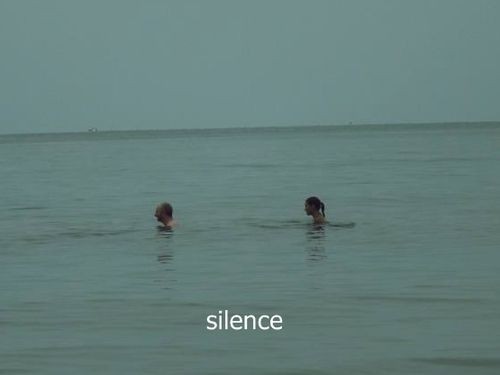





on silence
1. mieko shiomi, music for two players, 1963 (via @neo-catharsis ) 2. via @minuty 3. safia elhillo, "girls that never die: poems; geneva" 4. blue, 2002, dir. hiroshi ando 5. hélène cixous, "selected plays of hélène cixous: portrait of dora" 6. car sear headrest, 1937 state park (via @oozins ) 7. helena c moon 8. via pinterest 9. takuboku ishikawa, "romaji diary and sad toys"
#being haunted#mine#on silence#mieko shiomi#music for two players#safia elhillo#blue 2002#hiroshi ando#hélène cixous#car seat headrest#1937 state park#helena c moon#takuboku ishikawa#parallels*#web weaves#web weaving#wong kar wai#compilations#moodboard#mb*#literature#art#japanese literature#writings
362 notes
·
View notes
Photo

by Mieko Shiomi / 汐見美枝子
Hair cut / サンパツ (1955)
From the book: Shiosai / しおさい
665 notes
·
View notes
Text
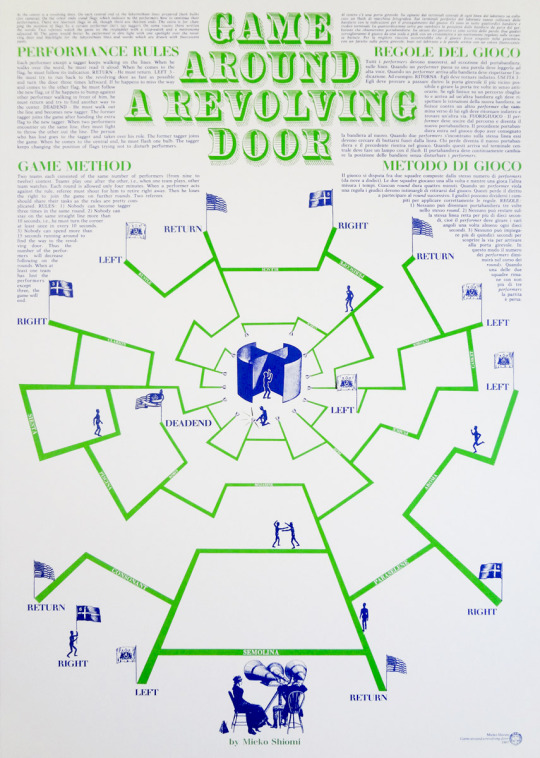
Mieko Shiomi, (1967), Game Around a Revolving Door, Edizioni Nuova Intrapresa, Milano, 1990, Poster reprint [Fondazione Bonotto, Molvena (VI)]
#graphic design#typography#art#fluxus#game#poster#mieko shiomi#edizioni nuova intrapresa#1960s#1990s
62 notes
·
View notes
Text
event for the midnight / mieko shiomi. 1963
.
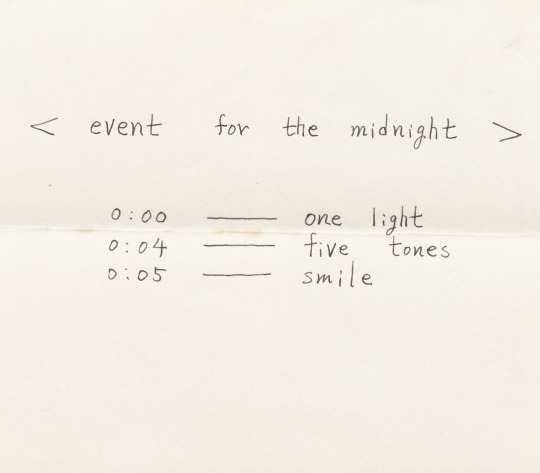
View On WordPress
3 notes
·
View notes
Text



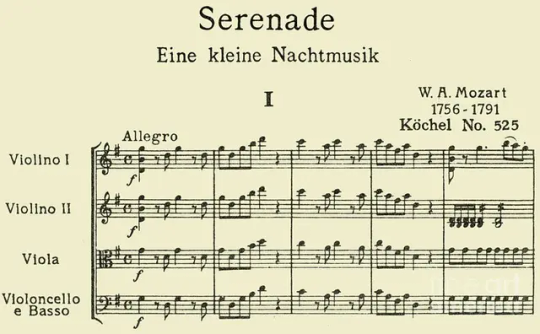

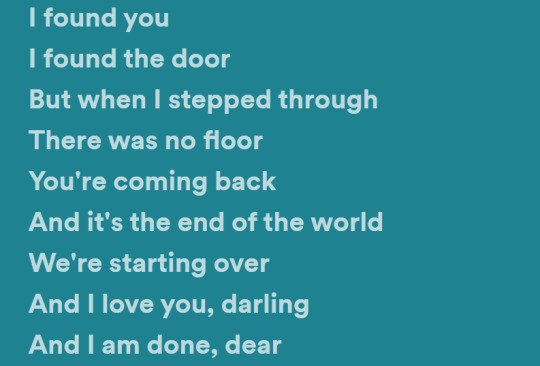

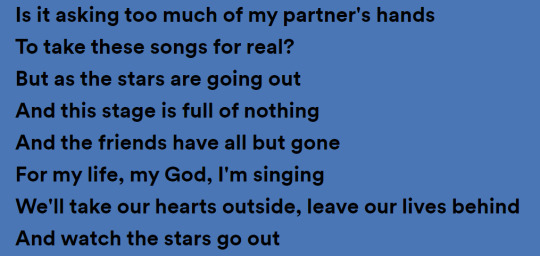



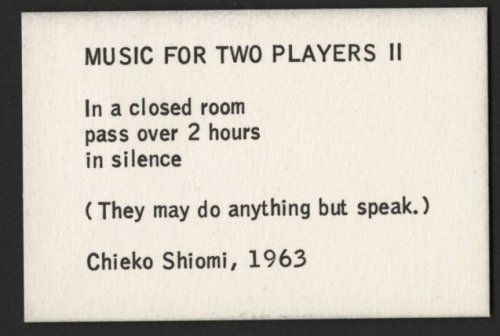

lionheart by 日日日
who killed cock robin / the wind-up bird chronicle by haruki murakami / eine kleine nachtmusik by mozart / crack baby by mitski / i want you by mitski / always by panic! at the disco / stars by dubstar / underbelly by nicole homer / because dreaming costs money my dear by mitski / king and lionheart by of monsters and men / music for two players II by mieko shiomi
#web weaving#enstars#ensemble stars#mine: web weaving#izumi sena#leo tsukinaga#izuleo#leoizu#lionheart#hello raiha enjoyers
14 notes
·
View notes
Text
Understanding Artists' Books
The Paul D. Fleck Library & Archives holds over 5,000 artists' books - and the collection continues to grow through a combination of donations and purchases every year.
But what is an artists' book?
Well, part of the (usually exciting) challenge of artists' books is that they're difficult to define. For the Emily Carr University Art and Design library, the artists' book collection "encompasses books conceived, crafted, published, produced or altered by an artist, designer or collective with the intention of creating an independent art work ." But for the Smithsonian Library, "[a]n artist’s book is a medium of artistic expression that uses the structure or function of 'book' as inspiration—a work of art in book form." Our collection sits somewhere in between, encapsulating works in both of these definitions - and some works that are beyond either. In our library, you'll find do-it-yourself zines and handmade chapbooks from small presses, sculptural pieces, weavings, objects, comic art, flipbooks, and dozens of other specific forms.
Our collection began in 1985, when the director of the Walter Phillips Gallery, Lorne Falk, handed Bob Foley (Banff Centre's first full-time librarian) a suitcase's worth of artists' books and said, "These are yours, you should do something with them." Through a meeting with AA Bronson, an artist who founded Art Metropole and the New York Art Book Fair, Foley expanded the collection by developing relationships with publishers and distributors. Since then, the collection came to include artists such as Dieter Roth, Ed Ruscha (whose artists' book Every Building on the Sunset Strip inspired the creation of this tumblr page!), Barbara Kruger, Joseph Beuys, Mieko Shiomi, Yoko Ono, Gertrude Stein, and John Cage.
Please take your time to explore our tumblr and our library catalogue - and if you ever get the chance, please come and explore our artists' books in person. The library staff are always excited to answer questions or help you find what you're looking for.
If you'd like to read more about artists' books, consider these books:
Aarons, Philip E. and Andrew Roth, editors. In Numbers: Serial Publications by Artists Since 1055. Zurich: PPP Editions, 2009.
Arnar, Anna Sigrídur. The Book as Instrument: Stéphane Mallarmé, the Artist's Book, and the Transformation of Print Culture. Chicago: University of Chicago Press, 2011.
Castleman, Riva. A Century of Artists Books. New York: Museum of Modern Art; distributed by Henry N. Abrams, 1994.
Drucker, Johanna. A Century of Artists' Books. New York: Granary Books, 1995.
Phillpot, Clive. Booktrek: Selected Essays on Artists' Books since 1972. Zurich: JRP Ringier, 2013.
6 notes
·
View notes
Photo
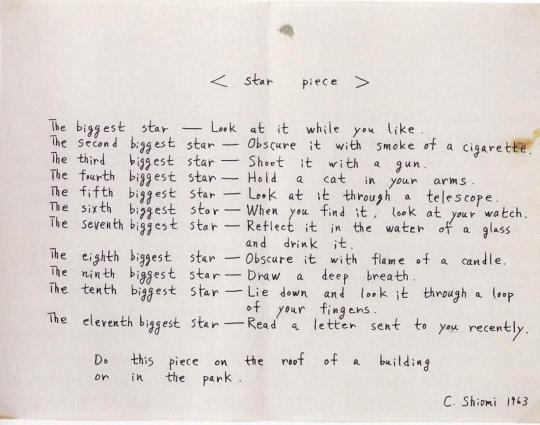
Mieko Shiomi
Star Piece
1963
2K notes
·
View notes
Text

"< star piece >," mieko shiomi, 1963
0 notes
Text
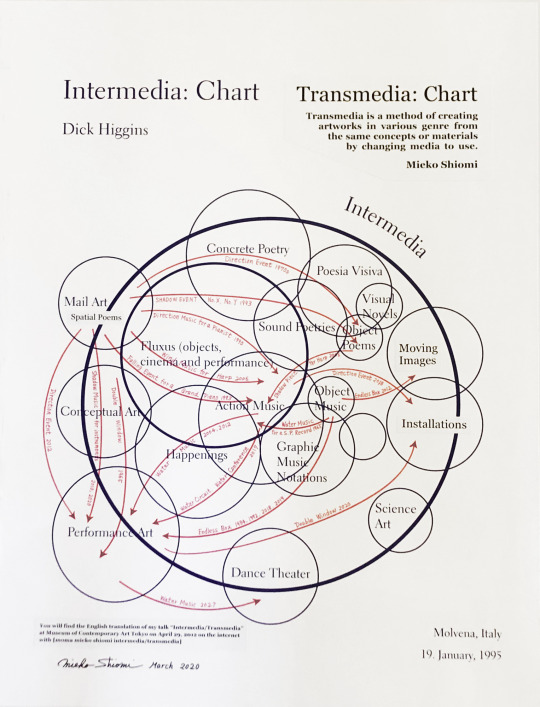
Dick Higgins, Intermedia Chart, Original sketch, 1995, Reprint, 1998, Mieko Shiomi's update, (printed cardboard), June 2020 [Fondazione Bonotto, Molvena (VI). © Dick Higgins, Mieko Shiomi]
62 notes
·
View notes
Text
Milano, museo del Novecento: da domani la mostra “Fluxus, arte per tutti”
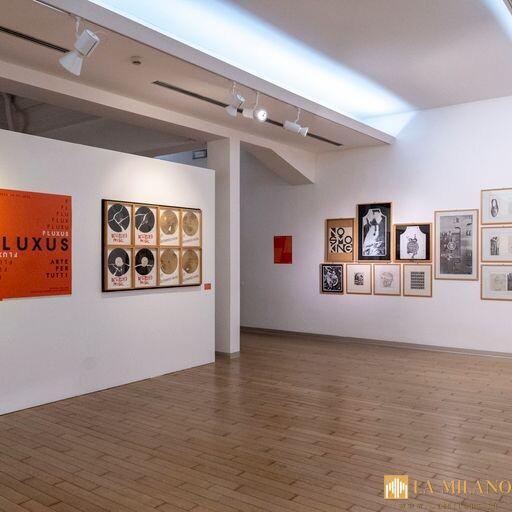
Milano, museo del Novecento: da domani la mostra “Fluxus, arte per tutti”.
Dal 25 novembre al 16 aprile 2023 il Museo del Novecento presenta “Fluxus, arte per tutti. Edizioni italiane dalla collezione Luigi Bonotto” a cura di Patrizio Peterlini e Martina Corgnati. La mostra, in programma nello spazio degli Archivi, analizza per la prima volta tramite pubblicazioni, opere e documenti il ruolo chiave dell’Italia nell’ambito di Fluxus, a sessant’anni dal Festival “FLuXuS Internationale FesTsPiELe NEUEsTER MUSiK” di Wiesbaden del settembre 1962.
Nato tra la fine degli anni Cinquanta e l’inizio degli anni Sessanta grazie all’artista, architetto e organizzatore culturale George Maciunas, Fluxus si sviluppa soprattutto negli Stati Uniti, in Europa e in Giappone, ed è al centro di una rivoluzione estetica e sociale che mira a intrecciare arti visive e performative, musica sperimentale e teatro dando anche vita a festival, happening e concerti con la volontà di eliminare la divisione nelle arti e, in generale, quella tra esistenza e creazione artistica.
Anche l’Italia partecipa in misura importante alla diffusione di Fluxus, in particolare con significative esperienze nella produzione di “edizioni”: oggetti, cartelle di grafica, libri d’artista in diversi esemplari. Queste opere sono realizzate da mecenati e operatori culturali insieme ai protagonisti del movimento, come Eric Andersen, Joseph Beuys, George Brecht, Giuseppe Chiari, Philip Corner, Geoffrey Hendricks, Allan Kaprow, George Maciunas, Nam June Paik, Ben Patterson, Dieter Roth, Wolf Vostell, Bob Watts e molti altri.
La realizzazione di edizioni gioca un ruolo essenziale nella diffusione sistematica del movimento, una scelta strategica che identifica come punti di forza i bassi costi di produzione, la facilità di distribuzione (anche per posta) e l’accessibilità al grande pubblico grazie ai prezzi economici. Caratteristiche che rispondono in pieno all’idea di democratizzazione dell’arte perseguita da Fluxus. È infatti nel secondo manifesto del 1963 che Maciunas parla di una Revolutionary Flood che renda l’arte accessibile e comprensibile a tutti, con un attacco diretto e senza mediazioni al sistema del mercato.
L’idea dell’inondazione s’incarna nelle piccole edizioni che caratterizzano la produzione Fluxus: una miriade di piccoli oggetti che, come l’acqua, possono arrivare ovunque portando con sé la nuova visione estetica del mondo.
I multipli e le numerose edizioni in mostra, provenienti dalla Collezione Luigi Bonotto, esplorano e approfondiscono il radicale cambiamento che la diffusione delle edizioni apporta nella fruizione dell’opera d’arte nel mondo Fluxus e dei suoi estimatori.
Da oggetto d’élite, destinato a pochi fruitori di una ristretta cerchia di facoltosi intenditori, l’opera diviene un oggetto cheap, accessibile e acquistabile da chiunque, spesso corredata di un “manuale di istruzioni” per un’azione da compiere a casa propria. Questo ulteriore passo verso la de-costruzione del mondo dell’arte ha avuto e continua ad avere ripercussioni ancora difficilmente indagabili. Di fatto, non solo qualsiasi oggetto può essere elevato ad arte, ma a operare questo passaggio può essere chiunque, senza necessariamente aver bisogno di un riconoscimento ufficiale.
In mostra sono esposte edizioni di: Eric Andersen, Ay-O, Joseph Beuys, George Brecht, John Cage, Giuseppe Chiari, Philip Corner, Willem De Ridder, Jean Dupuy, Robert Filliou, Albert M. Fine, Henry Flynt, Ken Friedman, Al Hansen, Geoffrey Hendricks, Dick Higgins, Joe Jones, Allan Kaprow, Milan Knizak, Alison Knowles, Jackson Mac Low, George Maciunas, Walter Marchetti, Jonas Mekas, Larry Miller, Charlotte Moorman, Claes Oldenburg, Yoko Ono, Nam June Paik, Ben Patterson, Dieter Roth, Takako Saito, Tomas Schmit, Carolee Schneemann, Mieko Shiomi, Gianni-Emilio Simonetti, Daniel Spoerri, Ben Vautier, Wolf Vostell, Robert Watts, Emmett Williams e altri.
Dall’inizio degli anni Settanta, la Collezione Bonotto raccoglie numerosissime testimonianze tra opere, documentazioni audio, video, manifesti, libri, riviste ed edizioni degli artisti Fluxus e delle ricerche verbo-visuali internazionali sviluppate dalla fine degli anni Cinquanta: Lettrismo, Poesia Concreta, Poesia Visiva, Poesia Sonora e Poesia Digitale. Tutta la collezione (opere e documenti) è interamente e liberamente consultabile on line sul sito della Fondazione Bonotto (www.fondazionebonotto.org) che, grazie all’enorme lavoro di connessioni sviluppate tra le varie schede, è divenuto un punto di riferimento importante a livello internazionale per approfondire la conoscenza di Fluxus e della Poesia Concreta, Visiva, Sonora e Digitale....
#notizie #news #breakingnews #cronaca #politica #eventi #sport #moda
Read the full article
1 note
·
View note



